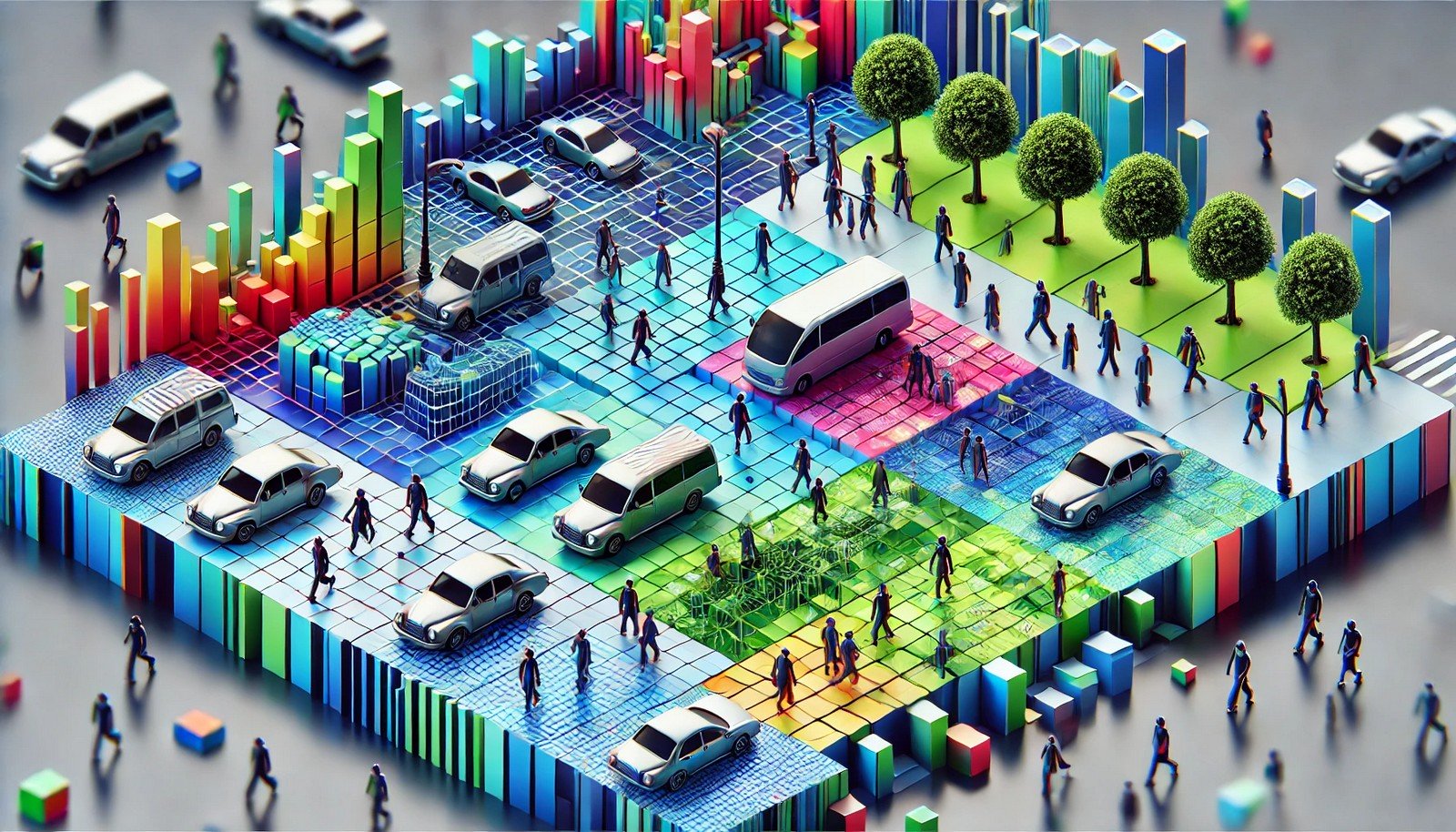Semantic Segmentation

Quick Navigation:
- Semantic Segmentation Definition
- Semantic Segmentation Explained Easy
- Semantic Segmentation Origin
- Semantic Segmentation Etymology
- Semantic Segmentation Usage Trends
- Semantic Segmentation Usage
- Semantic Segmentation Examples in Context
- Semantic Segmentation FAQ
- Semantic Segmentation Related Words
Semantic Segmentation Definition
Semantic segmentation is a process in artificial intelligence and computer vision where each pixel in an image is categorized into a specific class, such as "car," "tree," or "building." This fine-grained classification method enables machines to understand the content and structure of an image. It is essential for applications like self-driving cars, where recognizing distinct elements in the visual field is necessary for navigation and safety. The main challenge in semantic segmentation lies in accurately distinguishing boundaries and overlapping regions, especially in real-time settings.
Semantic Segmentation Explained Easy
Imagine coloring in a picture where each part of the picture is labeled: every car, tree, and building has its own color. In semantic segmentation, a computer does something similar but with much more detail—it recognizes each part of a picture and labels it, pixel by pixel. This helps it know what it’s looking at, like cars, people, and other objects.
Semantic Segmentation Origin
The concept of semantic segmentation emerged from advancements in AI and image processing in the late 20th century, evolving significantly with the rise of convolutional neural networks (CNNs) and deep learning. As computer vision techniques advanced, segmentation became more accurate, supporting applications like medical image diagnostics and automated vehicle navigation.
Semantic Segmentation Etymology
The term “semantic segmentation” combines “semantic,” relating to meaning or understanding, and “segmentation,” indicating a division or classification into distinct parts.
Semantic Segmentation Usage Trends
In recent years, semantic segmentation has gained traction due to the increase in deep learning capabilities and demand for intelligent visual systems. This technique is widely used in autonomous driving, where it helps vehicles recognize pedestrians, roads, and other objects. In healthcare, semantic segmentation assists in identifying features in medical images, contributing to more accurate diagnoses and treatment plans.
Semantic Segmentation Usage
- Formal/Technical Tagging:
- Computer Vision
- Deep Learning
- Image Processing - Typical Collocations:
- "semantic segmentation network"
- "pixel-wise classification"
- "segmentation mask"
- "semantic segmentation for autonomous driving"
Semantic Segmentation Examples in Context
- In autonomous vehicles, semantic segmentation helps identify and label roads, cars, pedestrians, and traffic signs, essential for safe navigation.
- Medical image analysis uses semantic segmentation to highlight tumors, organs, and other structures, enabling precise diagnostics.
- Environmental monitoring employs semantic segmentation to classify land types in satellite images, aiding in ecological studies and disaster response.
Semantic Segmentation FAQ
- What is semantic segmentation?
Semantic segmentation is an AI technique that classifies each pixel in an image into specific object classes. - How does semantic segmentation work?
It uses algorithms, often neural networks, to label pixels, identifying different objects or regions in an image. - Why is semantic segmentation important in autonomous driving?
It allows vehicles to recognize and navigate around objects like pedestrians, cars, and signs, enhancing safety. - What role does deep learning play in semantic segmentation?
Deep learning, particularly CNNs, has improved the accuracy of segmentation, making it viable for complex real-world applications. - How is semantic segmentation used in medical imaging?
It labels tissues, tumors, and other structures, aiding doctors in diagnosing and planning treatments. - Is semantic segmentation the same as instance segmentation?
No, while semantic segmentation labels classes, instance segmentation differentiates between individual instances within those classes. - What datasets are used for semantic segmentation?
Popular datasets include Cityscapes for autonomous driving and PASCAL VOC for general object segmentation. - What challenges exist in semantic segmentation?
Issues include handling overlapping objects, varying lighting conditions, and the need for large annotated datasets. - Can semantic segmentation be used in real-time applications?
Yes, but it requires optimized algorithms and hardware for high-speed processing. - What are the primary applications of semantic segmentation?
Applications range from autonomous driving and robotics to medical imaging and environmental monitoring.
Semantic Segmentation Related Words
- Categories/Topics:
- Computer Vision
- Image Analysis
- Deep Learning
Did you know?
Semantic segmentation is integral to the technology behind augmented reality (AR) applications, allowing AR systems to accurately layer virtual objects on real-world scenes by identifying objects and their boundaries in real time.
PicDictionary.com is an online dictionary in pictures. If you have questions or suggestions, please reach out to us on WhatsApp or Twitter.Authors | Arjun Vishnu | @ArjunAndVishnu

I am Vishnu. I like AI, Linux, Single Board Computers, and Cloud Computing. I create the web & video content, and I also write for popular websites.
My younger brother, Arjun handles image & video editing. Together, we run a YouTube Channel that's focused on reviewing gadgets and explaining technology.



Comments powered by CComment